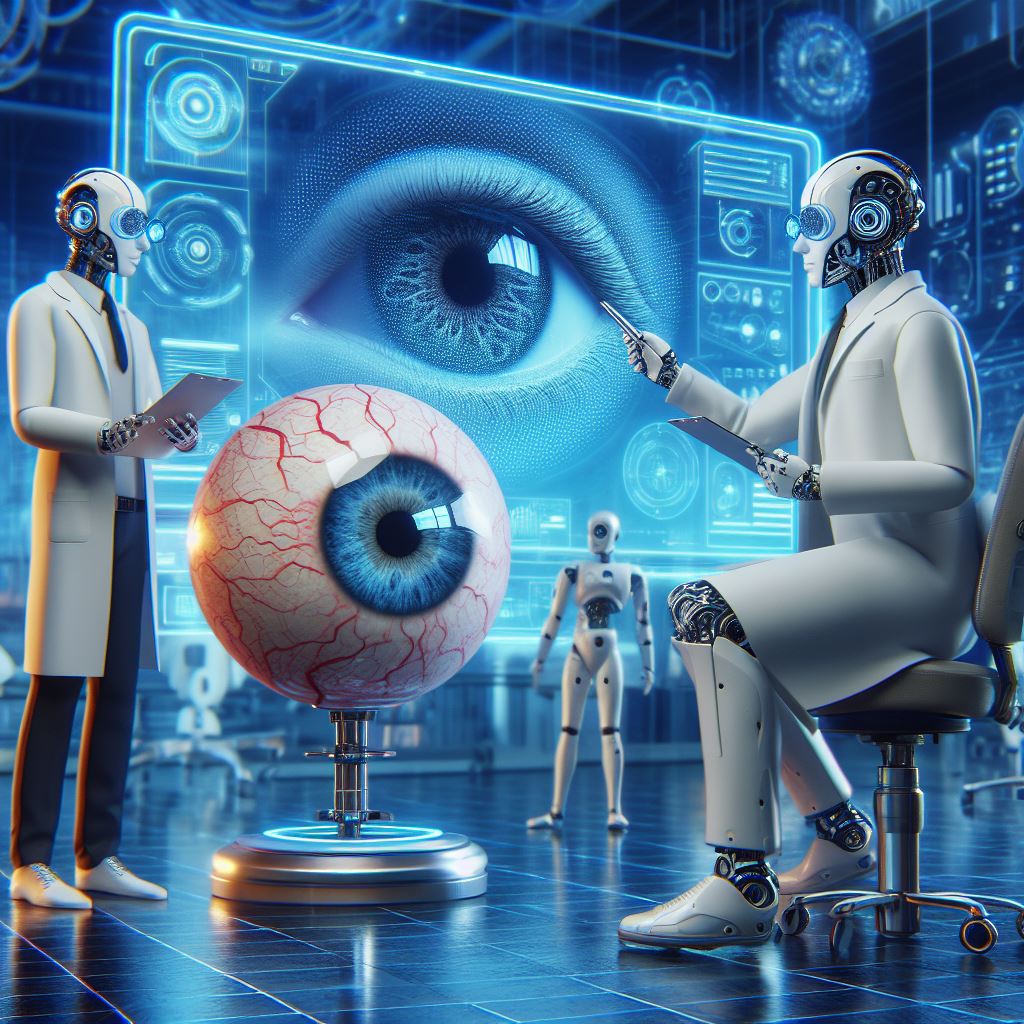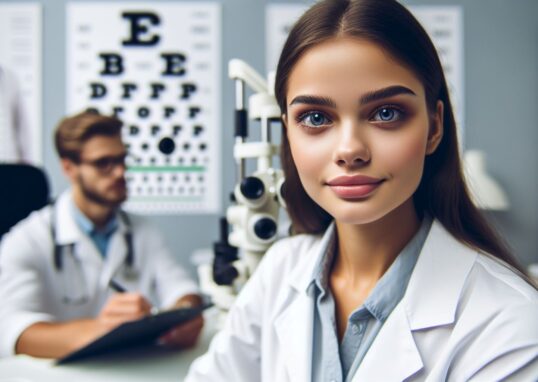
Introduction
Vision is one of our most critical senses, enabling us to perceive the world around us with clarity and precision. Regular eye exams are essential for maintaining good vision and identifying any potential issues early on. Eye diseases often progress without noticeable symptoms, making routine checkups a key defense in preserving our eyesight. For more detailed information on the importance of vision and regular eye exams, visit the CDC’s feature on vision health.
In today’s digital age, technology plays a pivotal role in enhancing eye care. From advanced diagnostic tools to innovative treatment methods, technological advancements are transforming the field of ophthalmology. Artificial intelligence, telehealth, and digital imaging are just a few examples of how technology is improving patient outcomes and streamlining eye care services. To learn more about how technology is shaping the future of eye care, check out this article from HealthTech Magazine.
Understanding Vision
Vision is a complex process that allows us to interpret the shapes, colors, and dimensions of objects in the world around us. Light enters the eye through the cornea, which bends the light to help focus it. The light then passes through the pupil, the opening whose size is controlled by the iris, the colored part of the eye. From there, it reaches the lens, which further focuses the light onto the retina at the back of the eye. The retina is home to photoreceptors that convert light into electrical signals. These signals travel via the optic nerve to the brain, where they are processed into the images we see. For a more detailed explanation of how vision works, you can read the full article from the National Eye Institute.
Common Vision Problems
Many people experience vision problems, which can include nearsightedness (myopia), farsightedness (hyperopia), astigmatism, and presbyopia. Nearsightedness is when close objects are clear, but distant ones are blurry. Farsightedness is the opposite, with distant objects being clearer than those up close. Astigmatism causes overall blurry vision due to an irregularly shaped cornea or lens. Presbyopia, which typically occurs after age 40, is the loss of the ability to focus on close objects. Each of these conditions affects how light is focused in the eye and can be corrected with glasses, contact lenses, or surgery. To understand these common vision problems in more detail, visit the comprehensive guide by the CDC.
Superstitions and Myths About Eyesight
Throughout history, eyesight has been surrounded by a tapestry of myths and superstitions. Cultural beliefs about eyes vary widely, with some communities thinking eating carrots can improve night vision, while others wear amulets to ward off the ‘evil eye’. These superstitions have been passed down through generations and are deeply ingrained in many societies. For an in-depth look at these cultural beliefs, visit Greenlane Penrose Optometrist.
Contrasting these beliefs, scientific facts about vision provide a clear understanding of how our eyes work. The process of vision involves light passing through the cornea and lens, which focuses it onto the retina. This light is then converted into electrical signals that the brain interprets as images. For more scientific insights into how human vision operates, check out the article from Vision Center.
The impact of these myths on eye care can be significant. While some myths are harmless, others can lead to improper eye care or delay in seeking treatment. It’s crucial to distinguish between myth and medical advice to ensure proper eye health. The American Academy of Ophthalmology debunks many common eye myths and presents the facts, which can be found at American Academy of Ophthalmology.
Embracing scientific understanding over superstition is vital for the advancement of eye care. While cultural beliefs are an integral part of our heritage, relying on scientific facts ensures we take the best possible care of our vision. The importance of this reliance cannot be overstated, as it leads to better eye health outcomes and the debunking of harmful myths.
The Importance of Regular Vision Exams
Regular vision exams are crucial for detecting abnormalities that may not be apparent to the naked eye. These exams can reveal conditions such as aneurysms, brain tumors, and various cancers that may first manifest within the eye. Additionally, systemic diseases like diabetes and heart disease can also be detected through changes observed in the retina during a comprehensive eye exam. For a detailed list of health problems that can be caught during an eye exam, you can refer to the American Academy of Ophthalmology.
The early detection and treatment of eye conditions are vital for maintaining vision and overall health. Conditions such as cataracts, diabetic retinopathy, glaucoma, and age-related macular degeneration can lead to significant vision loss if not addressed promptly. Regular eye exams allow for early intervention, which can prevent or delay the progression of these diseases. To understand more about the importance of early detection and treatment, please visit CDC’s Vision Health Initiative.
Technological Breakthroughs in Vision Exams
The field of vision exams is rapidly evolving with the advent of new technologies. These innovations are enhancing the accuracy and efficiency of eye care, leading to better patient outcomes. One of the significant advancements is the use of artificial intelligence (AI) in diagnosing conditions such as diabetic retinopathy and age-related macular degeneration (AMD). AI algorithms can analyze complex eye scans, aiding in early detection and treatment of these conditions. For an in-depth look at how AI is transforming ophthalmology, read the article from HealthTech Magazine.
Another breakthrough is the development of digital eye exams. These exams utilize digital devices and automated tests to measure visual acuity, determine vision prescriptions, and map corneal topography for contact lens fitting. Digital retinal imaging, a part of digital eye exams, provides a wide-angle view of the inside of the eye, allowing optometrists to spot any unusual conditions early. Learn more about digital eye exams and their benefits at Vision Center.
Telehealth platforms and remote patient monitoring have also seen a surge in use, especially during the COVID-19 pandemic. These technologies enable patients to receive care when in-person visits are not possible, ensuring continuous monitoring and management of eye health. For more information on the rise of telehealth in eye care, visit HealthTech Magazine.
The integration of these technologies into vision exams signifies a monumental shift in how eye care is delivered. They not only streamline the diagnostic process but also expand the scope of detectable conditions, ultimately contributing to the prevention of vision loss and the promotion of eye health.
Corrective Measures
How Corrective Lenses Work
Corrective lenses are a marvel of science that correct refractive errors by adjusting the focus of light as it enters the eye. Whether you’re nearsighted, farsighted, or have astigmatism, these lenses are designed to bend the light rays to the right degree, ensuring they converge precisely on the retina. This correction allows for clear vision at various distances. The lenses achieve this by being thicker in the center for farsightedness or thinner at the edges for nearsightedness. Astigmatism is corrected by using lenses that have different curvatures to compensate for the irregular shape of the cornea or lens. For a comprehensive understanding of how corrective lenses function, consider reading the detailed explanation provided by HowStuffWorks.
Getting a Prescription for Corrective Lenses
The journey to clear vision begins with a thorough eye examination by an optometrist or ophthalmologist. During this exam, your eye’s unique needs are assessed, and a prescription is crafted. This prescription will detail the lens power required to correct your vision, measured in diopters. The process may involve a series of tests to determine the exact nature of your refractive error and the best corrective measure. Once your prescription is determined, it’s used to create lenses tailored to your vision needs. For an in-depth look at the prescription process, Marvel Optics offers a clear explanation.
Conclusion
The journey towards maintaining excellent eye health is ongoing and vital. Regular vision exams are not just a means to correct vision but a proactive approach to detect eye diseases at their earliest and most treatable stages. These exams can reveal hidden signs of systemic conditions like diabetes and high blood pressure, often before other symptoms are evident. The CDC highlights the life-changing impact that regular eye care can have on preserving vision.
Technological advancements in vision exams, such as digital imaging and AI diagnostics, are revolutionizing the field, making exams more comprehensive, accurate, and comfortable for patients. These innovations are leading to earlier detection of conditions and more effective treatments, significantly improving patient outcomes. To learn more about these advancements, consider the insights from Modern Optometry and Optometry Advisor.
We encourage all our readers to prioritize their vision health by scheduling regular exams. Embrace the benefits that modern eye care offers and take the necessary steps to protect your vision. Your eyes are windows to the world and to your overall health; keep them clear and focused on a bright future.





